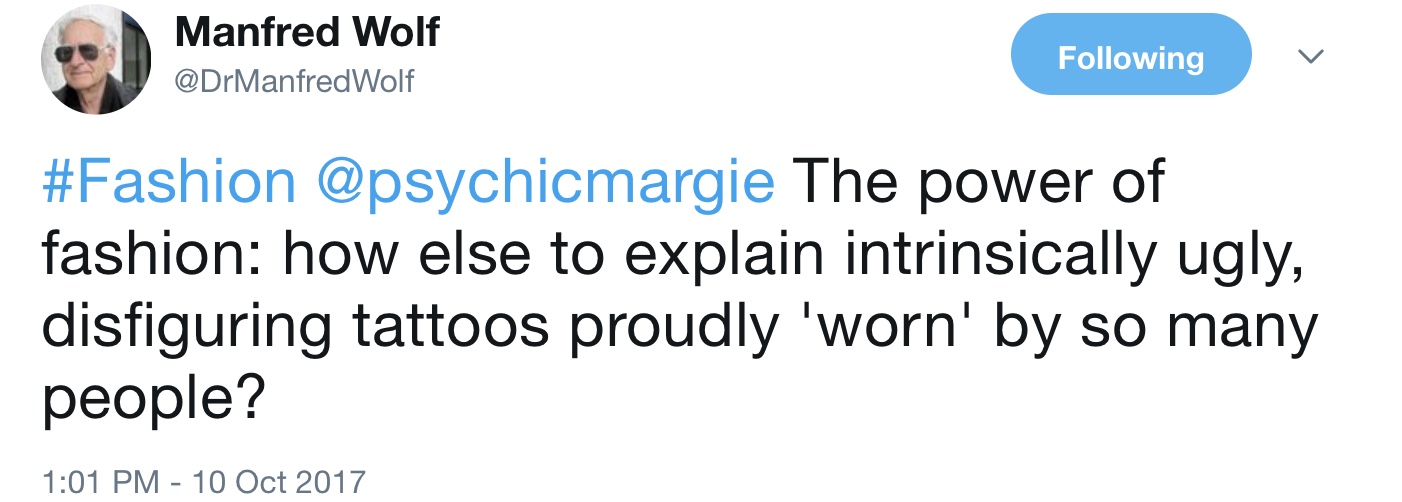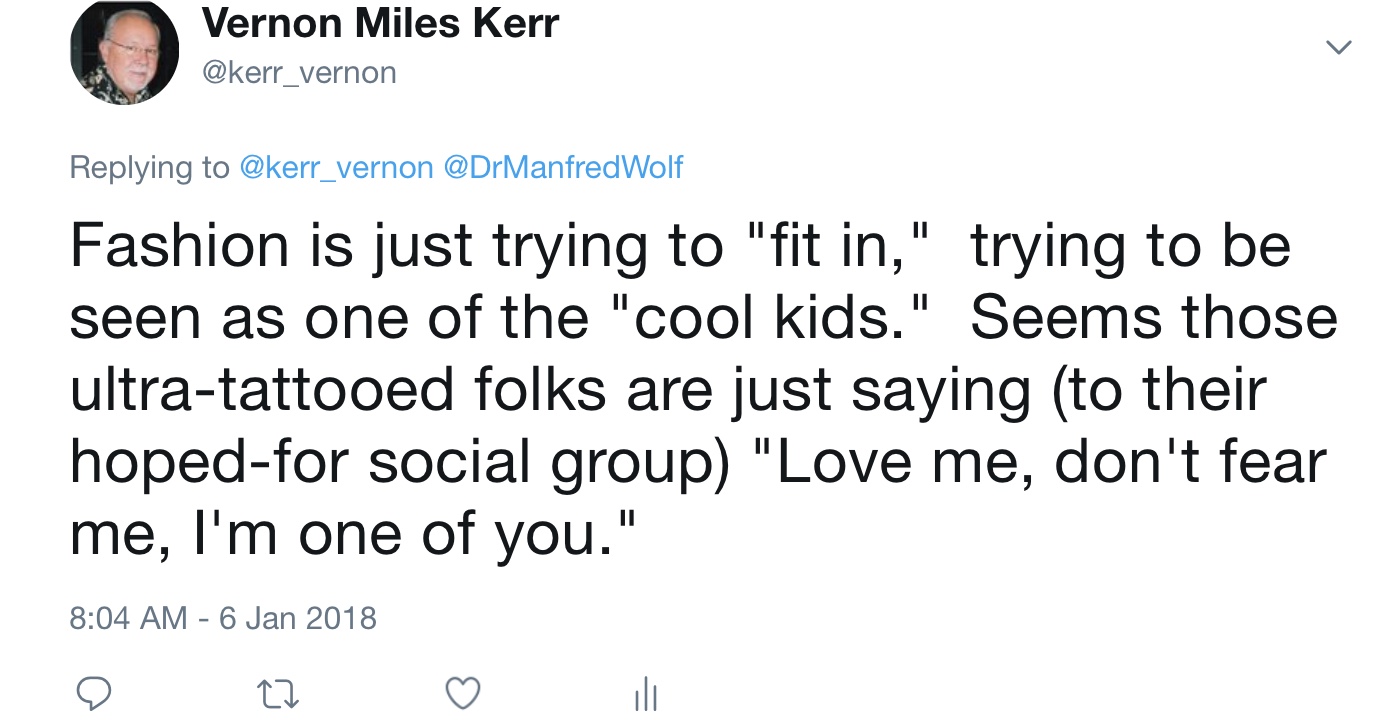Opinion | Are Tattoos Just "Fashionable" ?
Are Tattoos Just “Fashionable”?
© 2018 Vernon Miles Kerr
Today, my friend, former writing professor, and sometimes collaborator, Manfred Wolf retweeted:
To which I replied:
This little Twitter-exchange sparked a whole series of other thoughts about fashion itself and the subject of “tattooing the body,” including my limited knowledge of its history. I know that the Ice Man, the 5,000 year-old mummified remains of an Alpine hiker, showed curious line segments tattooed into his preserved skin. Indigenous people, including the Polynesians and the Ainu of Japan have traditions of tattooing whose origins are shrouded in the past. One can imagine that the first tattoos could have been accidentally created when a war-painted person was non-fatally injured and the resultant scar retained the paint pigment, giving him permanent, irrefutable proof of his prowess in battle (he survived).
In a college Psychology class in 1961, our instructor pontificated: “One tattoo, especially for sailors, is perfectly normal; but multiple tattoos are usually a sign of psychosis.” Later that day, I heard the Kingston Trio on the radio singing,
“We went to town to see
That old tattoo-lady
She was a sight to see,
Tattooed from head-to-knee…”
Today, what was then a money-making sideshow attraction can be seen— occasionally—on practically any urban sidewalk in the world—for free.
Fashions come and fashions go. It would be anomalous for the current rage-for-ink to go on unabated—so if this trend is disturbing or annoying to you, just wait a while.
This actual pop-up on a current website(not a joke) might be evidence that the trend has reached its pinnacle—or at least its reductio ad absurdum:
“Low-Interest Tattoo Loans,
click here.”
Of course, in addition to today’s “tattoo à la mode” there have always been jail-house tattoos, gang tattoos (both here and elsewhere) and the previously mentioned, traditional sailor’s tattoo. But our recent swelling-tide of artistic, subcutaneous pigmentation seems to have evolved from an earlier phase when various non-conformist segments, like the “biker” or “grunge” cultures used them partially to thumb their noses at polite society, and partially to communicate esoteric messages directed to those within their own group.
Instead of being offended, “polite society” picked up on the coolness-factor of showing a little rebellion on their persons. In the beginning of this evolution from the fringes to the center—this public assertion of independence from social norms was eagerly adopted and owned by the young. Nowadays, a degree of tattooing that would have been considered “excessive” a few years ago is seen on people of all ages. On an airport shuttle, recently, I endured a five minute discussion by two total strangers (both in their forties or fifties) of their mutually-admired body art—finished, in-progress, and planned-for-the-future. A few decades ago, they might have been sharing wallet pictures of their grandchildren; but now, they had something new in common, something to bond with—beyond their grandchildren or sports-team loyalty. There was something there, beyond mere fashion.
Temporary and faddish though it may be, body art now has gone beyond “who are you wearing,” to a new level: a minor social movement. And like all historically noteworthy social movements, when they have done their job, they are soon replaced by the next “great thing.”
But when the body-art “movement” has inevitably faded away, the pigment will have not. Fifty years from now, one can imagine a small child pointing to an 80 or 90-year old and asking, “Mommy why do old people always have drawings all over them? Will that happen to me when I get old?” Probably not.


